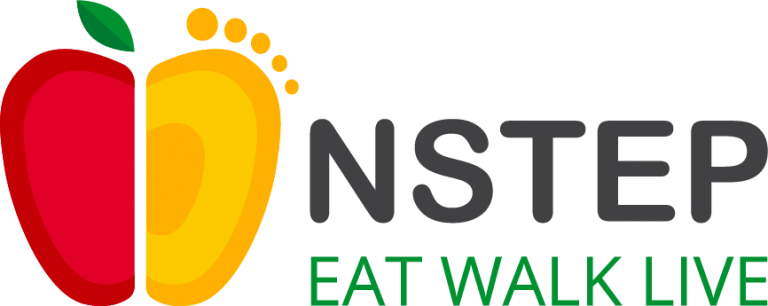How to Add More Whole Foods to Your Diet
Written by: Jessica Schafers, NSTEP Health Champion – Edmonton, AB
Greetings NSTEPpers!
What if we told you that eating a diet rich in whole foods could help reduce the risk of developing chronic diseases? Well, it’s true, and with summer soon approaching, there will be an abundance of delicious, healthy, whole foods available!
Keep in mind that not all processed foods are unhealthy. For example, cheese and canned salmon are technically processed foods but are still healthy options!
But what ARE whole foods anyway?
Whole foods are found in nature – or as close as it comes to being in their natural form. Think of foods that can be found in your gardens, such as fresh strawberries and cucumbers; or things like fish and whole-grain rice. Another way to describe these foods is unprocessed foods.
Processed Foods
When foods are processed, they typically have added salt, sugar, and fats for several reasons like enhancing taste, extending shelf life, and creating a variety of new foods for consumers.
Sounds great, right?
Well, and I’m sure you saw this coming… there’s a catch!
Eating an excess of these things (salt, sugar, and fat) can lead to obesity, which is a risk factor for many chronic diseases including type 2 diabetes and heart disease.
The Canada Food Guide uses the terms ‘unprocessed or minimally processed’ and ‘ultra-processed’ to categorize foods as healthy and less healthy. In general, the more processed the food, the more salt, sugar, and fat – think processed meats, sugary cereals, deep-fried foods, and sugary beverages.
But keep in mind that not all processed foods are unhealthy. For example, cheese and canned salmon are technically processed foods but are still healthy options!
Why should I eat more whole foods?
Whole foods are packed with more nutrients like vitamins and minerals that your body needs every day.
For example, whole grains have all the parts of the grain (bran, endosperm, and germ) so they are higher in fibre and other nutrients compared to refined grains. They also don’t have the added sugar, salt, and fats.
Compare a potato to a potato chip – the potato chip is high in fats and salt. Or compare canned fruit cocktail salad to a homemade fruit salad – the homemade fruit salad will not have all the added sugar from the syrup.
What about water?
When looking to quench your thirst, consider water as your first choice.
Fruit juices and sugary beverages are processed foods. High intakes are associated with dental decay (cavities) and an increased risk of overweight, obesity, and type 2 diabetes.
Not only that, but water is also essential in helping to regulate our body temperature, digest food, carry nutrients around our body, rid the body of waste, and regulate bowel movements.
Most people will need at least 8-9 cups of water every day. When being physically active or sweating, your body’s need for water increases.
Dehydration can occur before physical signs appear, so it is important to drink water before you are thirsty, especially during the hot summer months. Some foods have higher water content and can help you hydrate.
For example:
- Lettuce, celery, and cucumber
- Melons like watermelon, cantaloupe, and honeydew
- Strawberries and many other sources of fruit
- Soups
- Unsweetened milk
Tips on how to add more whole foods to your diet
1. Cook at home.
Home-cooked meals with simple ingredients can help eliminate the extra salt, sugar, and fat in your diet.
2. Use herbs for flavour.
Try using fresh or dried herbs like thyme and rosemary to flavour your food instead of salt or high sodium spice blends. An at-home herb garden can make using fresh herbs more affordable and convenient!
3. Seasonal vegetables and fruits.
In-season produce is more flavourful and affordable than out of season. Frozen is an excellent alternative to fresh as there is very little nutrient loss during the freezing process. Canned can be a great alternative, but keep an eye on the added salt and sugars (i.e. look for words like “No Salt Added”).
4. Choose whole grains like whole grain pasta, rice, and bread.
Keep in mind that whole wheat and multigrain may not mean whole grain, so check the ingredient list and look for the words “whole grain” followed by the name of the grain, like whole grain oats and whole-grain wheat.
5. Choose lean meats, fish, and plant-based proteins like beans more often.
Avoid processed meats like hot dogs, sausages, ham, and beef jerky, which are high in salt and less healthy fats.
6. Carry a water bottle with you.
Drinking water throughout the day before you feel thirsty can help you beat the summer heat and stay hydrated.
Eating more whole foods and drinking water are part of creating healthy eating patterns and living a healthy lifestyle. For more information on healthy eating, go to the Canada Food Guide Website: https://food-guide.canada.ca/en/

